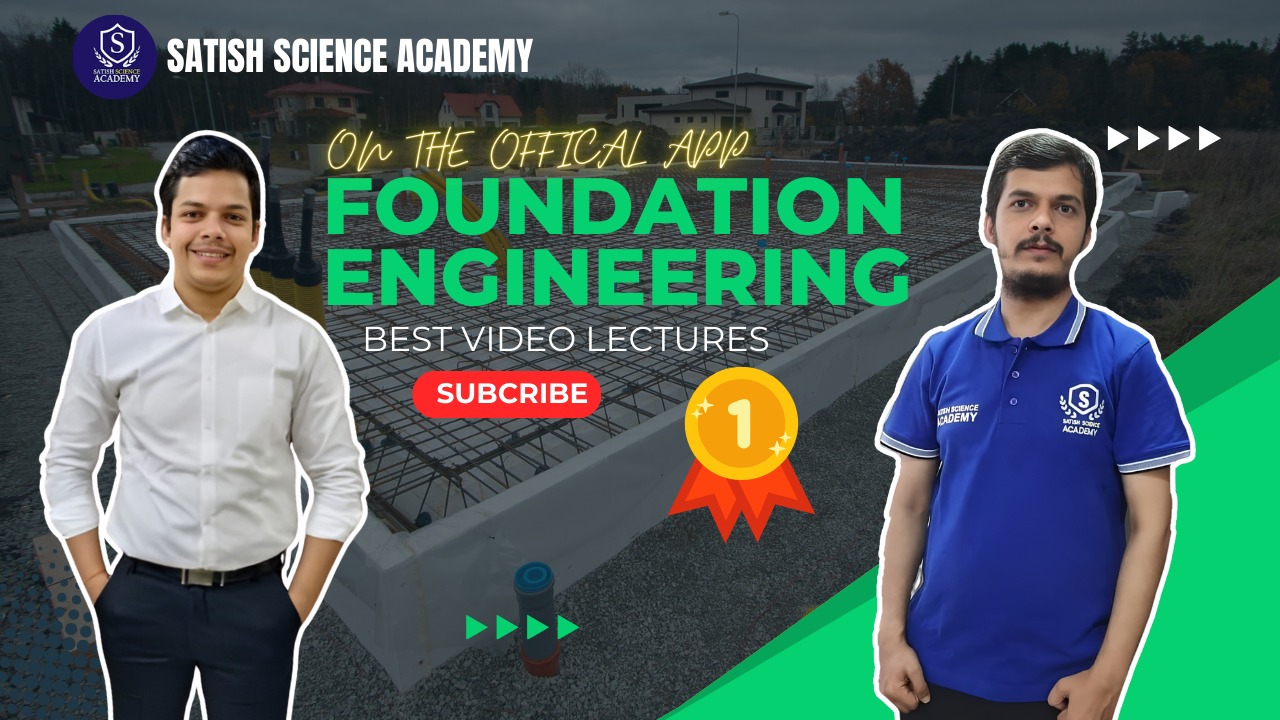Foundation Engineering
Description
🌟 Best-Selling Course Description for MSBTE, AKTU, BATU, SPPU, GTU, and DTU 🌟
🎓 Course Title:Foundation Engineering
📈 Course Overview: Unlock the secrets of foundation engineering with this comprehensive course tailored for top technical universities! 💡 Dive deep into subsurface investigations, bearing capacity, settlement analysis, and innovative foundation techniques. Get hands-on insights with real-world applications and cutting-edge testing methods. 🌍
🔄 Unit 1: Subsurface Investigations for Foundations (06 Hours)
-
🌟 Purpose and planning of subsurface exploration
-
🔧 Methods: trial pits, borings, exploration holes
-
🔮 Core recovery, RQD, core log
-
🛰 Geophysical methods: seismic refraction, electrical resistivity
-
📝 Sampling: types, degree of disturbance
-
🌐 Field tests: SPT (N value correction), DCPT, SCPT
-
🔍 Advanced tests: pressure meter, borelog
-
📃 Soil investigation report
🔄 Unit 2: Bearing Capacity (06 Hours)
-
📊 Definitions and shear failure modes
-
📝 Bearing capacity analysis: Terzaghi, Hanson, Meyerhof, Skempton, Vesic
-
📖 IS code method for rectangular and circular footings
-
🌆 Evaluation: plate load test, SPT
-
🎯 Housel's perimeter shear concept
-
🌳 Layered soil and water table effects
-
💡 Eccentricity and presumptive bearing capacity
🔄 Unit 3: Immediate and Consolidation Settlement (06 Hours)
-
📈 Immediate Settlement: causes, pressure bulb, contact pressure
-
🌟 Allowable and differential settlement (IS criteria)
-
📝 Settlement components, plate load test, SPT
-
💡 Consolidation: spring analogy, Terzaghi's theory
-
🎓 Lab test, coefficient of consolidation
-
🌐 Time fitting methods: square root, logarithm of time
-
📖 Normal, over, and pre-consolidation pressure
🔄 Unit 4: Pile Foundations (06 Hours)
-
🌟 Introduction and pile classification
-
🔧 Installation: cast in-situ, driven, bored piles
-
📝 Load capacity: static and dynamic methods (ENR, Hiley formula)
-
💪 Pile load tests: cyclic and standard
-
🛠️ Group action: field rule, rigid block method
-
🔬 Negative skin friction and uplift capacity
-
📈 Settlement of pile groups in cohesive soil
-
🛠️ Micro piles: introduction and uses
🔄 Unit 5: Shallow Foundations, Piers, and Caissons (06 Hours)
-
📝 Shallow Foundations: types, applications, location, depth
-
🌟 Design principles and proportioning steps
-
📝 Combined footings: rectangular, trapezoidal, strap footings
-
🌐 Raft foundations: types, floating raft, design principles
-
🛠️ Piers and Caissons: types and uses
-
📝 Well foundation: components, sand island method
-
🔄 Tilt and shift precautions and remedies
-
🔄 Lateral stability: Terzaghi, IRC, ultimate soil resistance
🔄 Unit 6: Cofferdams and Foundation on Black Cotton Soils (06 Hours)
-
💧 Cofferdams: types and applications
-
💡 Contiguous pile walls and RC diaphragm wall
-
🌱 Black cotton soil: characteristics, swelling potential
-
🔬 Engineering problems, swelling pressure measurement
-
🌟 Foundations: design principles, construction techniques
-
🔧 Under-reamed piles, stone columns
-
🌐 Preloading with vertical/sand drains
🏆 Why Enroll in This Course?
-
🔬 Tailored for premier technical universities
-
🔄 Real-world engineering applications
-
💡 Hands-on understanding of field tests
-
🌟 Master advanced foundation engineering concepts
🎉 Join us today and build a strong foundation for your engineering career! 🌟
Loading...

